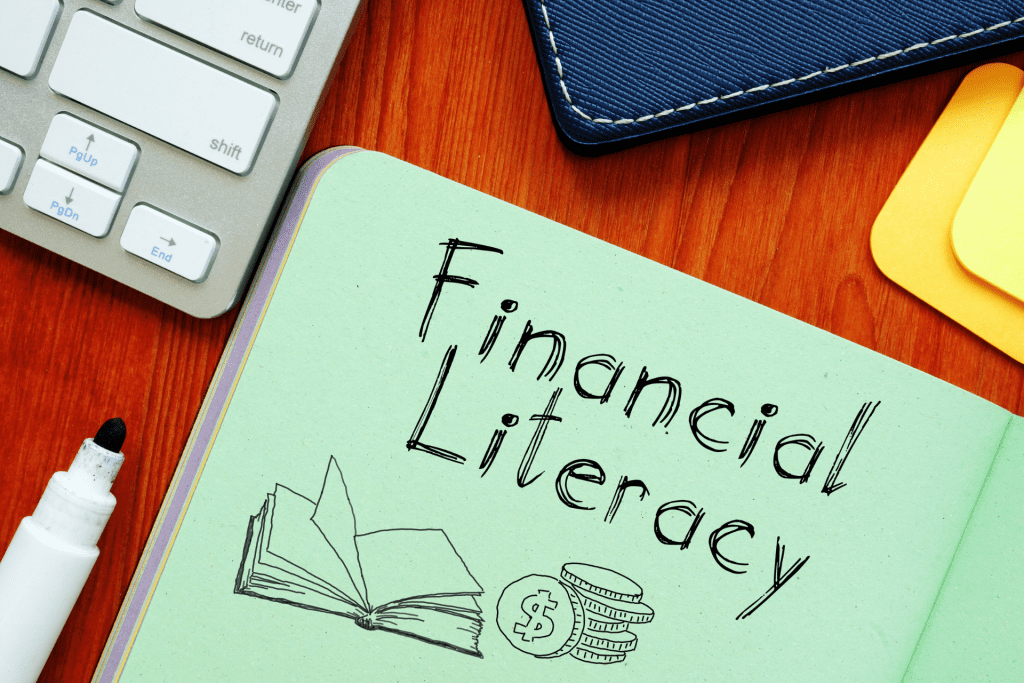
In a world where money plays a central role, it is crucial to understand its value from a young age. Financial literacy is a vital life skill that equips kids with the knowledge to make informed decisions about their finances in the future.
Survey findings published earlier this year by the Household, Income, and Labour Dynamics in Australia (HILDA) revealed a notable decline in financial literacy among individuals aged 15 to 24. These statistics are worrisome and emphasize financial literacy among the kids and youth so we can guide them on a path of financial stability and success.
Let’s have a look at some steps to take to ensure financial literacy among kids.
Educating Kids Early
The journey towards financial literacy begins with education. Parents and educators have a significant role in teaching kids about the value of money and how it works. The Australian Securities and Investments Commission (ASIC) supports this initiative through its MoneySmart Teaching program, which provides resources for educators to integrate financial literacy into their curriculum.
At home, parents can start by introducing simple concepts such as earning, spending, saving, and donating. For instance, you could use a trip to the grocery store as a practical lesson on comparison shopping and budgeting. It’s also important to discuss topics like credit and debt early on, explaining what they mean and their potential consequences.
Teach Them to Save and Invest Early

Saving is one of the most fundamental aspects of financial literacy, and it’s never too early to start. Encourage your child to save a portion of their pocket money or earnings from part-time jobs. You could help them set up a savings account, which will not only introduce them to banking but also allow them to watch their savings grow over time.
Investing is another crucial aspect of financial literacy. It might seem like a complex topic for kids, but it can be broken down into understandable chunks. Start with basic concepts like the difference between stocks and bonds or the idea of risk and reward. For older kids, consider introducing them to online stock market games. These simulate the real-world functioning of stock markets and can be a safe and educational way to learn about investing.
Guide Them to Begin

Starting on the path to financial literacy can feel overwhelming for both kids and parents. But remember, the journey is just as important as the destination. As a guide, help your child to set achievable financial goals, such as saving for a new toy or a trip. This not only makes the process more tangible but also teaches them the value of money and the satisfaction of reaching a goal.
It’s also important to equip them with the tools to manage their money effectively. This could mean teaching them how to use a budgeting app or explaining how to track their spending.
Keep Motivating Them
When it comes to building financial literacy, consistency is key. Keep the conversation about money open and ongoing. Regularly check in on their saving and spending habits and celebrate their financial wins, no matter how small.
Encourage them to ask questions and express their concerns about money. This not only fosters a healthy relationship with money but also helps them become confident in their ability to manage their finances.
Final Thoughts
Financial literacy is not just about dollars and cents; it’s about preparing kids for the real world. By educating them early, teaching them to save and invest, guiding them to start, and continuously motivating them, we can help them build a secure financial future. As parents and educators, it’s our responsibility to give our kids the tools they need to navigate the world of finance with confidence and efficiency. After all, today’s financially literate children are tomorrow’s economically empowered adults.


2 Responses
Very important article Bharat,
Teaching basic money management skills are crucial from young age,
Budget
Bargain
Negotiations
Simple maths rule of inflation vs interest from bank.
Worst areas where money drains..
Gambling – if not in controlled manner could result in worse situations.
Gym – if not fully utilised after signing up
Remembering every penny counts.
Thanks
Tejas
Thanks for your comments.
Team at Cashflow Properties
Comments are closed.